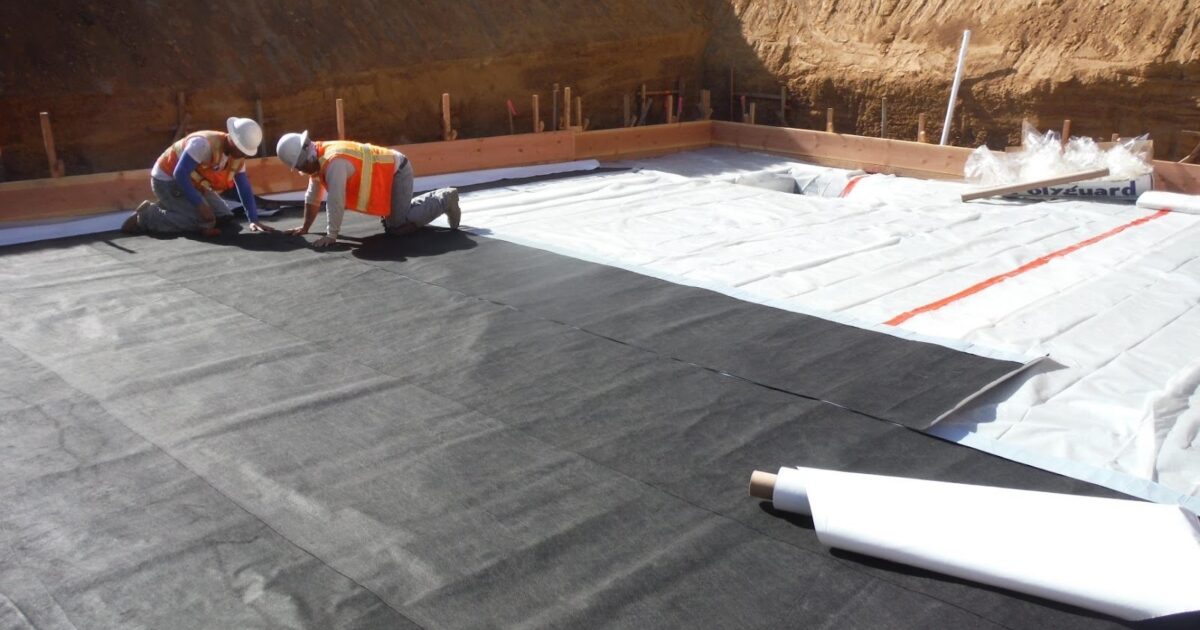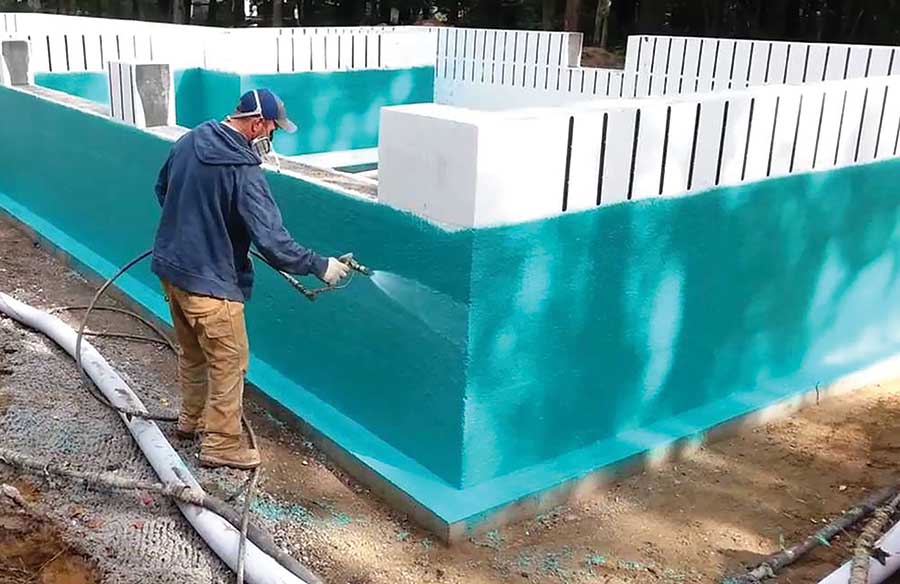Just How Waterproofing Functions: A Thorough Check Out Strategies and Technologies
Waterproofing is crucial for shielding frameworks from moisture-related damage. It includes different methods and innovations that create barriers against water intrusion. Typical approaches, such as compacted clay, exist together with modern-day developments like liquid-applied membrane layers. Understanding the subtleties of these approaches is important for reliable application. However, the efficiency of any kind of waterproofing solution pivots not only on the techniques made use of however likewise on recurring maintenance and assessment. What are the essential factors that influence long-term performance?
Comprehending the Fundamentals of Waterproofing
Waterproofing is an essential procedure that safeguards structures from water invasion, which can result in substantial damage over time. This technique involves the application of various materials and techniques made to produce an obstacle against wetness. The main goal is to avoid water from passing through surface areas, which can create wear and tear, mold growth, and structural instability.Various factors affect the selection of waterproofing approach, including the sort of framework, its area, and ecological conditions. Comprehending the physics of water movement and the residential or commercial properties of various products is critical in choosing an efficient waterproofing solution.Effective waterproofing not only safeguards structures but likewise enhances their longevity and integrity. Normally, it is incorporated right into the style phase of building to ensure comprehensive security. As awareness of water-related issues grows, the value of comprehending waterproofing basics becomes progressively clear to engineers, home builders, and building owners alike.
Traditional Waterproofing Methods
Typical waterproofing techniques have been used for centuries, counting on time-tested techniques and products to safeguard frameworks from water damage. Among the earliest techniques involves the usage of clay, which, when compacted, creates a natural obstacle against moisture. Furthermore, bitumen, a sticky, black product stemmed from petroleum, has been employed for its waterproof residential properties, usually related to roofs and foundations.Another method entails the application of lime-based plasters, which give a breathable layer that allows moisture to get away while stopping water access. Thatch roof, a typical method still seen in some cultures, supplies exceptional waterproofing due to its securely loaded straw layers.Moreover, the use of rock and block has actually been popular, as these products are naturally resistant to water when correctly set up. In general, typical waterproofing techniques emphasize the value of picking proper materials and building practices to improve durability versus water intrusion.
Modern Waterproofing Technologies
Developments in modern waterproofing technologies have transformed the way structures are secured from water damages. Innovative methods such as liquid-applied membrane layers and advanced sealers have enhanced the efficiency and adaptability of waterproofing services. These innovations permit smooth application, decreasing the threat of leakages and making sure complete protection over complicated surfaces.Moreover, the combination of clever innovations, such as dampness sensors and automated monitoring systems, makes it possible for real-time analysis of waterproofing performance. This positive method promotes prompt upkeep and reduces lasting fixing costs.Additionally, developments in spray-applied layers offer fast application and exceptional adhesion, adapting to different substrates while offering durable defense. Techniques like polymer-modified systems even more boost versatility and sturdiness, making them ideal for varied atmospheres. In general, contemporary waterproofing modern technologies not only mitigate water breach but likewise add to the longevity and sustainability of frameworks, marking a substantial change in the sector.
Products Made Use Of in Waterproofing
The efficiency of waterproofing services greatly depends on the products made use of in their application. Different materials are used to create barriers against water access, each with one-of-a-kind buildings matched for different atmospheres. Frequently used materials consist of membranes, layers, and sealants.Liquid-applied membranes, usually made from polyurethane or acrylic, develop a smooth obstacle that adapts to intricate surface areas. Sheet membranes, usually created from rubber or polycarbonate, deal toughness and are ideal for larger areas. Additionally, cementitious waterproofing materials, made up of cementitious compounds, provide exceptional bond and flexibility.Sealants made from silicone or polyurethane are essential for joints and seams, ensuring complete defense. Furthermore, innovative products, such as geo-composite membrane layers, incorporate numerous functions, improving performance. Generally, the option of dig this waterproofing products is vital in achieving long-lasting and reliable water resistance, tailored to particular job needs and environmental conditions.
Common Applications of Waterproofing
Waterproofing plays a vital role in numerous fields, guaranteeing the longevity and honesty of frameworks. Common applications consist of property remedies that protect homes, business framework that safeguards businesses, and commercial settings that call for robust defense against moisture. Understanding these applications highlights the significance of waterproofing in preserving both safety and security and performance across various atmospheres.
Residential Waterproofing Solutions
Lots of home owners face obstacles with moisture breach, making reliable domestic waterproofing solutions crucial. Different approaches exist to address this issue, including exterior and interior waterproofing systems. Inside remedies typically include the application of sealers and finishes to basement walls, which help avoid water infiltration. Outside approaches commonly include the setup of drainage systems and water resistant membrane layers that divert water away from the foundation.Additionally, homeowners might consider sump pumps to remove water buildup and dehumidifiers to regulate moisture levels. Appropriate grading and using gutters additionally play an important function in managing water flow around the home. By executing these strategies, home owners can substantially decrease the threat of water damage and mold and mildew development, guaranteeing a completely dry and safe living setting.

Commercial Infrastructure Security
Efficient waterproofing services play a critical role in the protection of commercial framework. Foundation waterproofing Omaha. These methods are important for securing buildings, car park frameworks, and bridges from water damage, which can compromise structural integrity and lead click for more to costly repair work. Common applications include the setup of membrane layers, layers, and sealants that create obstacles against moisture seepage. Areas such as cellars, roof coverings, and exterior wall surfaces are commonly prioritized to ensure long life and longevity. In addition, waterproofing systems can boost power effectiveness by protecting against water-related issues that might lead to mold and mildew development and wear and tear. By carrying out robust waterproofing procedures, homeowner can shield their investments and maintain operational efficiency, eventually adding to the general sustainability of business facilities
Industrial Applications Review
While various fields deal with one-of-a-kind difficulties, the requirement for trusted waterproofing remedies remains a constant in commercial applications. Industries such as manufacturing, building, and energy typically run into atmospheres where moisture exposure can threaten structural honesty and functional effectiveness. In producing facilities, waterproofing is vital for protecting equipment and materials from water damages. In building and construction, it safeguards structures and basements versus groundwater seepage. The energy industry relies upon waterproofing for the security of equipment in hydroelectric plants and overseas frameworks. In addition, food processing industries make use of waterproofing to ensure hygiene and conformity with security standards. In general, efficient waterproofing services are crucial for enhancing sturdiness, safety and security, and productivity throughout various industrial setups.
Upkeep and Longevity of Waterproofing Solutions
Although waterproofing remedies are made to use long-term security versus dampness breach, regular upkeep is vital to assure their efficiency and durability - Foundation waterproofing Omaha. Routine evaluations play a substantial duty in determining prospective issues such as cracks, peeling, or signs of water damages. Resolving these issues quickly can stop additional degeneration and pricey repairs.Additionally, cleansing the surface of waterproofed locations aids remove dirt and particles that could jeopardize the honesty of the waterproofing obstacle. It's likewise advisable to reapply protective coverings or sealants as advised by producers to keep suitable efficiency. Ecological factors, such as UV direct exposure and severe weather condition problems, can impact the lifespan of waterproofing products, making routine assessment important
Frequently Asked Questions
Can Waterproofing Be Applied in Cold Weather Condition?
The question of applying waterproofing in cold weather condition increases problems about attachment and curing. Numerous products might not execute at their finest in reduced temperature levels, requiring mindful choice and consideration of particular standards for efficient application.
How Much Time Does Waterproofing Typically Last?
The duration of waterproofing efficiency varies based on materials and environmental aspects. Typically, it can last from five to 10 years, however routine upkeep and assessments are important to ensure peak performance and durability.
Is Do It Yourself Waterproofing Effective and Safe?
The effectiveness and safety of DIY waterproofing depend on various aspects, including material high quality and application strategy. While some people accomplish satisfying results, others might run into issues that jeopardize lasting protection and structural integrity.
What Are the Indications of Failing Waterproofing?
Indicators of falling short waterproofing consist of visible water spots, peeling paint, mold and mildew development, mildewy odors, and dampness in walls or ceilings - Basement waterproofing Omaha. These indications recommend endangered barriers, requiring prompt inspection and potential remediation to stop additional damages
How Do I Choose the Right Waterproofing Specialist?
